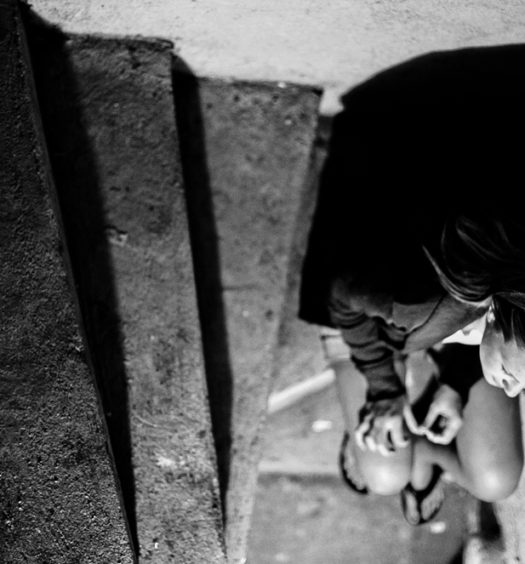No More Passive Observers. The 4 Golden Rules to Disruptive Design
‘Disruption’ is a buzz-word, and the problem with buzz-words is overuse. They very quickly lose their power and meaning, becoming empty vessels, terms lightly thrown around as vague concepts rather than powerful actions. ‘Sustainability’ has long suffered this fate and now ‘disrupt’ is taking its turn at being misunderstood. So, why do all the aspirational words get abused? Probably because they provide an ideology that people are collectively drawn towards, but if we aren’t careful, or don’t re-appropriate them, they will fall victim to the corporate-speak of meaninglessness. Disruption in the tech space is all about selling more stuff, making more stuff cheaper and perpetuating the systems of un-sustainability.
I’m all about rescuing or ‘re-hijacking’ terms such as these for positive social change. Disrupting is what rebels do, it’s the domain of protagonists, provocateurs and revolutionaries— yet the term ‘disruption’ has become synonymous with the tech world with marginal improvements and sexy superficial design changes. Just starting something ‘techy’, is apparently disrupting something else! But newness does not equate to disruptive change, certainly not positive social change. Design as a profession is based on shifting, iterating, adding, subtracting, re-purposing, and yes, revolutionising the product, system or service that currently exists to serve particular functions or fill specific needs. Everyone can be disruptive by design, it’s all about intent and conviction.
An intentionally disruptive design practice is one that re-directs the approaches that creative practitioners and active doers use to intentionally identify and effect positive change in the world. Like any other form of growth and change, disruption is a learnt process that involves using tools to assist with both the thinking and the doing. I have been developing an intentionally disruptive practice for many years now; early on I was not aware that this was what I was doing (I was often told that I was just being rebellious!). Being intentionally disruptive has allowed and encouraged so much more than a simple rebellious streak—it has empowered my ability to enact real change through my work, and resulted in an evolving practice that intentionally messes with and within the system to create positive change. So much so, that I started an experimental knowledge lab to help others learn these tools and become part of the change that they want to see in the world.
“No more passive observers, only active doers, challengers and disrupters!”
Here are top 4 golden rules for being disruptive by design:
01 | LEAD WITH AN AGENDA
Know what your goals and motivations are, be true to yourself and the objective that you have. Far too often we are encouraged to hide our agendas and objectives, but if you want to effect change you need to embody it, know it and project it throughout everything you do. Passion is a transformative language of change that can help you draw people to your mission. Be bold!
02 | KNOW YOUR STUFF
Knowledge is power, and whilst most of the stuff we need to know is tacitly learned through the experiences we have in the world, it’s really important to know your field and develop a rigorous relationship with the knowledge of the area you’re seeking to change. You need to know the rules to break them, so you need to gain the knowledge before you can start to disrupt it!
03 | EXPLORE AND LEVERAGE THE SYSTEM
To disrupt is to intervene, this requires you to know intimately the arena you are working in and to seek out the gaps in need of disrupting. Systems make up the world, from the social systems through to the industrial and ecosystems that we all rely on for survival. By adopting a systems thinking approach (Google it, it’ll change your life) you will not only have a far deeper understanding of what change you are trying to effect, you will also be empowered with the super critical power of foresight to help avoid potential problems that your interventions might result in.
04 | ADOPT A ‘DO PHILOSOPHY’
Talking about doing something is one thing, but ideas locked in people’s heads never changed the world, so you need to just do it! I have a ‘do philosophy’, which allows me to rapidly test, prototype and implement ideas in the real world soon after having and distilling them—otherwise it just doesn’t happen. However works best for you, even if it’s simply telling other people and starting to build a movement around the idea, you will be creating momentum and implicating others so that you will be driven to do it! Some things don’t work out, this is absolutely normal and necessary, and the general rules of design are to test/iterate/ideate/test/iterate and repeat till you arrive at the best solution. So get out there and so something!
There are many more additions to the disruptive designer toolkit, but these four approaches provide the scaffolding for enacting change through your work. The single most important thing is just to empower yourself be the change you want to see in the world!
LEARN + CONNECT
Learn more about Disrupt Design / Un-Schools
Connect via Facebook and Twitter: @LeylaAcaroglu / @unschools / @disruptdesignNY
FROM THE EDITOR
At Conscious, we are inspired by remarkable people and organizations and so we set out to tell stories that highlight human interests, global initiatives, innovation, community development, and social impact. You can read more stories like this when you subscribe.
Editor’s Note: Leyla Acaroglu joins Conscious to teach us about Design Sustainability. Leyla, from Australia, rallies an actively engaged creative community in New York to curate experiences that evoke positive change for us all. Read her interview here. Discover her series here.
Leyla has just announced an amazing fellowship program for 12 on the cusp leaders for 1 week in NYC in June. Applications are now open.




